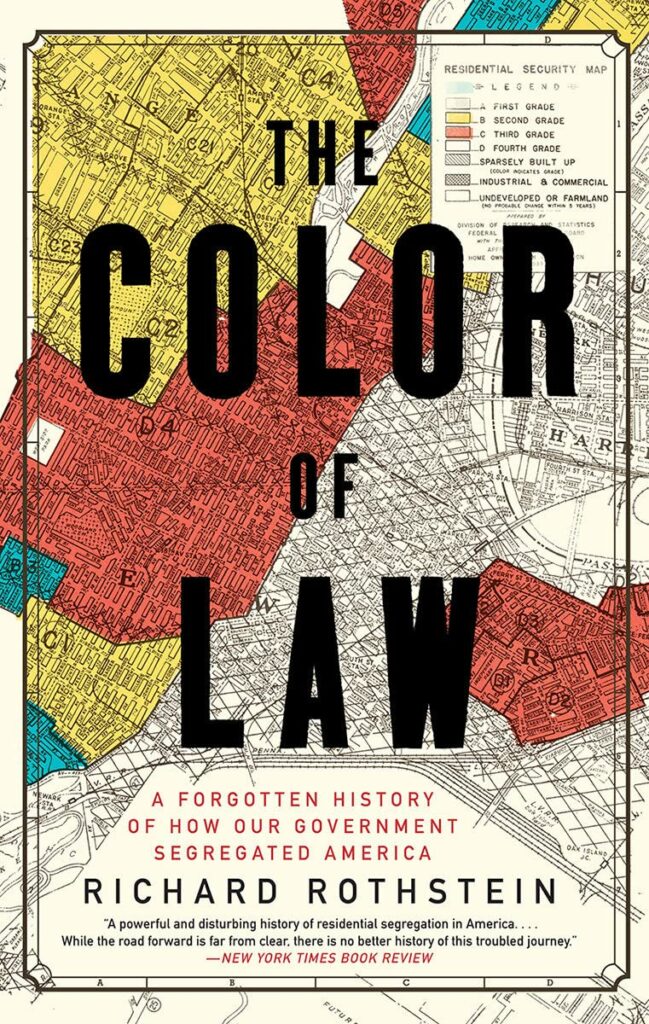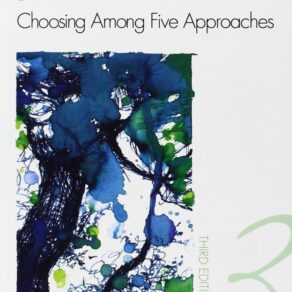In today’s post, I’m diving into a profound and eye-opening book that has captured the attention of readers and critics alike: “The Color of Law: A Forgotten History of How Our Government Segregated America” by Richard Rothstein. This isn’t just any book; it’s a meticulous exploration of a troubling chapter in American history that many of us might not be fully aware of. It’s about how governmental policies, far from being passive, have actively enforced racial segregation, particularly in housing.
Firstly, I’ll share with you an extended summary of the book. This summary aims to encapsulate the essence of Rothstein’s arguments, highlighting the key points and historical contexts that make this book a crucial read for understanding the roots of racial segregation in America.
Following the summary, I’ve selected some impactful quotes from the book. These quotes are powerful reflections and key insights that bring to life Rothstein’s research and storytelling prowess. They serve to provide a more nuanced understanding of the book’s themes and arguments.
Lastly, for those of you who love to delve deeper into your reads, perhaps in a book club setting or just for personal reflection, I’ve prepared a set of book club questions. These questions are designed to provoke thought, encourage discussion, and challenge your perspectives on the themes explored in the book.
Whether you’re a teacher, an educator, a parent, or simply someone interested in the intersections of history, policy, and social justice, “The Color of Law” is a book that demands attention. Let’s explore together the depths of Rothstein’s work and uncover the often-hidden truths about how our societies have been shaped.
The Color of Law Summary
“The Color of Law: A Forgotten History of How Our Government Segregated America” by Richard Rothstein is a crucial and eye-opening exploration of the often-overlooked history of how U.S. government policies at the federal, state, and local levels have systematically enforced racial segregation in housing. This comprehensive work dismantles the common misconception that segregation in America was solely a product of individual prejudices and market forces. Instead, Rothstein meticulously documents how the American government itself has played an instrumental role in segregating metropolitan areas across the country.
Rothstein delves into the historical context, starting from the New Deal era, and shows how segregation was not just a byproduct but a deliberate outcome of government policies. One striking example is the practice of ‘redlining’, where the Home Owners’ Loan Corporation created maps that marked predominantly Black neighborhoods as risky investments, thereby denying them access to loans and insurance. This practice, endorsed by the government, led to a cycle of poverty and underinvestment in these areas.
Moreover, Rothstein explains how public housing programs initially created integrated living environments but were soon transformed into tools for segregation. The construction of segregated public housing in separate black and white areas, the subsidization of suburban developments on the condition that homes were sold only to whites, and the sanctioning of discriminatory practices in the real estate industry all contributed to the racial divide.
The book also tackles the long-term impacts of these segregationist policies. The wealth gap between white and Black families, disparities in education and health outcomes, and the ongoing struggles for civil rights are all, in part, legacies of this government-sanctioned segregation.
Rothstein’s work is not just an historical account; it serves as a wake-up call to acknowledge and address the intentional and systematic nature of racial segregation in America. By showing how these policies were enacted and enforced by law, he emphasizes that they are not natural or inevitable, and thus can be undone through concerted legal and political efforts.
“The Color of Law” is a powerful reminder of how deeply embedded racism is in the fabric of American society and how much work remains to be done to rectify these injustices. It’s a must-read for anyone interested in understanding the true history of racial segregation in the United States and the role of law and policy in shaping societal norms and inequalities.
The Color of Law Quotes
Here are some of the main quotes that communicate the main themes of the book:
“The core argument of this book is that African Americans were unconstitutionally denied the means and the right to integration in middle-class neighborhoods, and because this denial was state-sponsored, the nation is obligated to remedy it.” ― Richard Rothstein, The Color of Law
“Today’s residential segregation in the North, South, Midwest, and West is not the unintended consequence of individual choices and of otherwise well-meaning law or regulation but of unhidden public policy that explicitly segregated every metropolitan area in the United States.” ― Richard Rothstein, The Color of Law
“Just like Supreme Court justices, we as a nation have avoided contemplating remedies because we’ve indulged in the comfortable delusion that our segregation has not resulted primarily from state action and so, we conclude, there is not much we are required to do about it. Because once entrenched, segregation is difficult to reverse, the easiest course is to ignore it.” ― Richard Rothstein, The Color of Law
“As citizens in this democracy, we—all of us, white, black, Hispanic, Asian, Native American, and others—bear a collective responsibility to enforce our Constitution and to rectify past violations whose effects endure. Few of us may be the direct descendants of those who perpetuated a segregated system or those who were its most exploited victims.”― Richard Rothstein, The Color of Law
“We have created a caste system in this country, with African Americans kept exploited and geographically separate by racially explicit government policies. Although most of these policies are now off the books, they have never been remedied and their effects endure.”
― Richard Rothstein, The Color of Law:
“If segregation was created by accident or by undefined private prejudices, it is too easy to believe that it can only be reversed by accident or, in some mysterious way, by changes in people’s hearts. But if we—the public and policy makers—acknowledge that the federal, state, and local governments segregated our metropolitan areas, we may open our minds to considering how those same federal, state, and local governments might adopt equally aggressive policies to desegregate.” ― Richard Rothstein, The Color of Law
African Americans cannot await rectification of past wrongs as a gift, and white Americans collectively do not owe it to African Americans to rectify them. We, all of us, owe this to ourselves. As American citizens, whatever routes we or our particular ancestors took to get to this point, we’re all in this together now.” ― Richard Rothstein, The Color of Law
The Colour of Law Book Club Questions
Here are some questions that can guide your book club’s conversation:
- Historical Awareness: Were you aware of the extent to which the government played a role in segregating America before reading this book? How did Rothstein’s presentation of facts change or reinforce your understanding of American history?
- Key Policies: Which government policy or action discussed in the book surprised you the most in terms of its impact on segregation? Why?
- Personal Reflection: Did the book make you reflect on the racial makeup and history of your own neighborhood or city? How does understanding this history change your perception of your community?
- Rothstein’s Arguments: How effectively do you think Rothstein argued his main point that the government was chiefly responsible for racial segregation in America? Were there any arguments or points that you found particularly compelling or unconvincing?
- Contemporary Relevance: How do the historical events described in the book relate to current issues of racial inequality and segregation? Can you see the legacy of these policies in today’s society?
- Solutions and Reparations: Rothstein suggests that acknowledging the government’s role in segregation is a step towards addressing racial disparities. What solutions does he propose, and do you think they are feasible? What other solutions can you think of?
- Impact on Education and Opportunity: How did the segregation policies described in the book affect education and economic opportunities for marginalized communities? Discuss the long-term impacts of these disparities.
- Narrative and Structure: How did the structure of the book, with its mix of historical detail and personal stories, affect your understanding and engagement with the content? Were there any stories that stood out to you?
- Emotional Response: What emotions did this book evoke in you? Anger, surprise, sadness? Why do you think it had that effect?
- Broader Implications: How does the book challenge or reinforce your views on government responsibility and the role of policy in shaping societal norms?
Final thoughts
In conclusion, “The Color of Law” by Richard Rothstein is a crucial educational tool that sheds light on the deliberate government policies that have shaped racial segregation in America. It challenges us to confront uncomfortable truths and compels us to reflect on the systemic nature of inequality. The extended summary, selected quotes, and discussion questions provided here are meant to deepen your understanding and spark a meaningful conversation about these critical issues.
As educators, parents, and engaged citizens, it’s vital that we engage with such material, not just for historical awareness but for shaping a more equitable future. Rothstein’s book offers us the information and perspective needed to understand the roots of racial segregation and the ongoing impact of these policies. This understanding is the first step toward advocacy and change.
Whether you read this book alone or discuss it in a group, let it be a catalyst for deeper understanding and action. Remember, knowledge is not just power; it’s a pathway to change. Let’s use the insights gained from “The Color of Law” to educate, inspire, and contribute to a society where equality and justice aren’t just ideals, but realities for all.







